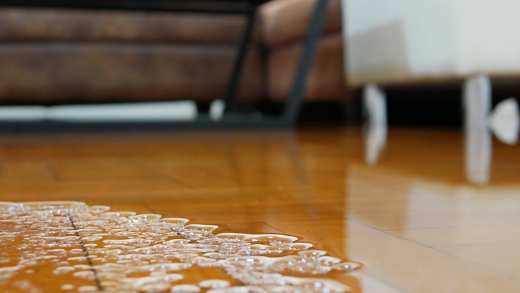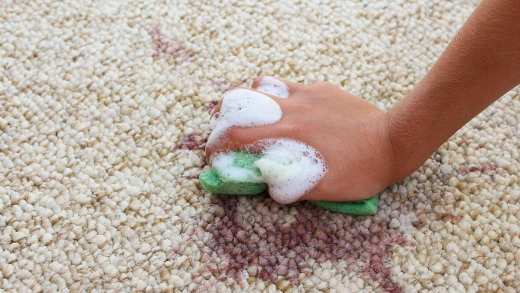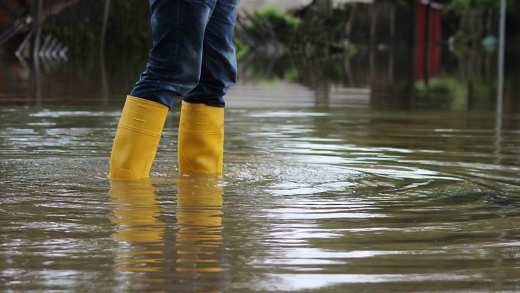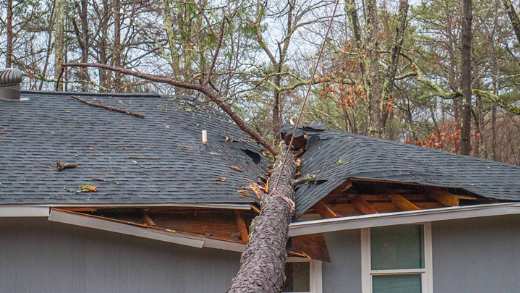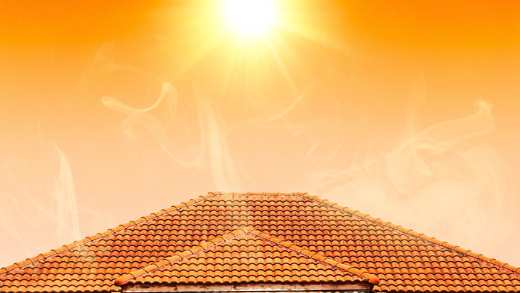
Why do I need home insurance?
It’s there to help protect your pocket from the cost of fixing damage or replacing things that are stolen, usually because of bad weather or break-ins. In other words, if high winds hurl tiles from your roof, you find your lounge knee-deep in water, or a burglar empties your home of jewellery and laptops.
Fingers and toes crossed, none of this ever happens. But if it does, our home cover will rebuild your walls and put money in your bank account to refill your wardrobes and get you back to everyday life.
You can also bulk up your cover using a pick and mix of extra add-ons. They can squash the worry of accidental spills and smashes, give you an expert helping hand with legal worries or protect your bike once you’ve pedalled away from your front door.
The benefits of our Aviva Signature home insurance
Who needs home insurance?
Anyone who owns their little patch of the UK should think about getting cover. Your mortgage lender (if you have one) probably demands it. Because your house or flat is likely to be the most expensive belonging you have, and by some distance. Home insurance can place a protective bubble around the value of its bricks, beams and ceilings – and all the loose bits and pieces inside – in case of things like fire, theft, and flooding.
Our insurance is cut to fit anyone who lives in the home they own. But we also have insurance that would suit you when renting out your property, or if you live under a rented roof.
If you’re a landlord
You can take out cover that focuses on getting the building itself back to its tenant-ready best, if there’s damage to fix or bits to rebuild. So you can flick the switch back to normal – for your tenants and your rent money – as soon as possible.
If you’re a tenant
Ask your landlord what home insurance they already have. If they’ve ticked off buildings insurance as part of the deal, just protect all the prized possessions that have moved in with you.
What does home insurance cover?
Our Aviva Signature home insurance neatly stitches together two different types of cover. For the solid structure of your home, there’s our buildings insurance. For all the furniture, appliances, clothes and valuables you fill it with, there’s contents insurance.
We'll replace damaged items with new ones. Or pay for them to be restored, repaired or replaced. Damage due to wear and tear or breakdowns is not covered. Accidental damage is an optional cover. Cover allows for a refurbished mobile phone to be provided as a replacement.
You can take them out separately if you only need one or the other. To find out more, see our summary of cover (PDF 90 KB).
What’s covered
What’s not covered
Please read policy documents for details of all exclusions and limitations.

How much cover will I need?
If you've ever been burgled or flood damaged, you'll know how important home insurance is. We all have valuables and expensive items at home we want to protect, from gadgets and jewellery to furniture and food.
It's important to understand what level of contents insurance is best. If you don't have enough, your policy won't pay to replace all your stuff after major flood, fire or burglary. But if you overdo it, you might overpay. Using our free home content value calculator, you can estimate the cover you're likely to need, based on what you own.
Boost your home cover with our optional add-ons
Make your cover as unique as your living room wallpaper. Add any of these extra twirls and flourishes that cost a bit more but can stretch your safety net even wider.
Protect your no claim discount
Legal services
Home emergency
Worldwide personal belongings cover
Accidental damage
Cycle cover

How much does home insurance cost?
Just like baking a cake, there are many ingredients to measure out, mix, fold and whisk together that decide how much you pay for cover.
Some are just about you, like where you live or how many past claims you’ve had. Others are about the world around you and what’s happening in the world of insurance – for example, if we’ve been battered by another Beast from the East, or more people are making claims across the whole country.
Looking for a different type of cover?
When our doubly protective Aviva Signature home insurance (bolting together buildings and contents cover) is more than you need, see if these tick the boxes instead:
Why choose us for Aviva Signature home insurance?
Our cover has been given a 5 Star Rating by Defaqto. Their experts open the front door of our policies, and delve into every last corner – it’s not based on opinions or hearsay.

What you need to get a home insurance quote
So that we can tot up your price accurately, we’ll ask you for information.
- About you – just the usual, like your name and date of birth, and if you’ve made any home insurance claims in the last five years.
- About your home – things like your postcode, whether you own your home, and if you live there all the time.
- Cover for valuables – We'll cover your jewellery, watches, items of gold, silver or other precious metals, works of art (paintings, etchings, tapestries, statues, sculptures), stamp, coin and medal collections. Footnote [2]
- About your policy – pick how much you’d be prepared to pay towards the cost of a claim (known as an ‘excess’), and any optional add-ons you want.
We’ve taken a broom to some of the trickier questions and brushed them out of your path. To do this, we’ve followed certain hunches (known as ‘assumptions’ in the insurance world) about your home instead. For example, that you have five bedrooms or fewer, and that flood waters have never washed through your home before. You’ll need to look through these assumptions, and tell us if any aren’t true for you or your property.
Policy documents
If you already have insurance with us, you'll find the documents for your policy in MyAviva.
Aviva Signature home insurance FAQs
How does the claims process work?
What is personal belongings cover?
What happens if I move house?
Are mobile phones covered by home insurance?
How do I add mobile phone protection to my existing policy?
Is my bicycle covered?
Do I need to have a smoke and heat detector installed in my property?

Get instant support
Ask our chatbot for online help or to contact our support teams
Home insurance knowledge centre
Browse through our reading list of articles in your own time and start building the foundations in your home insurance knowledge.







